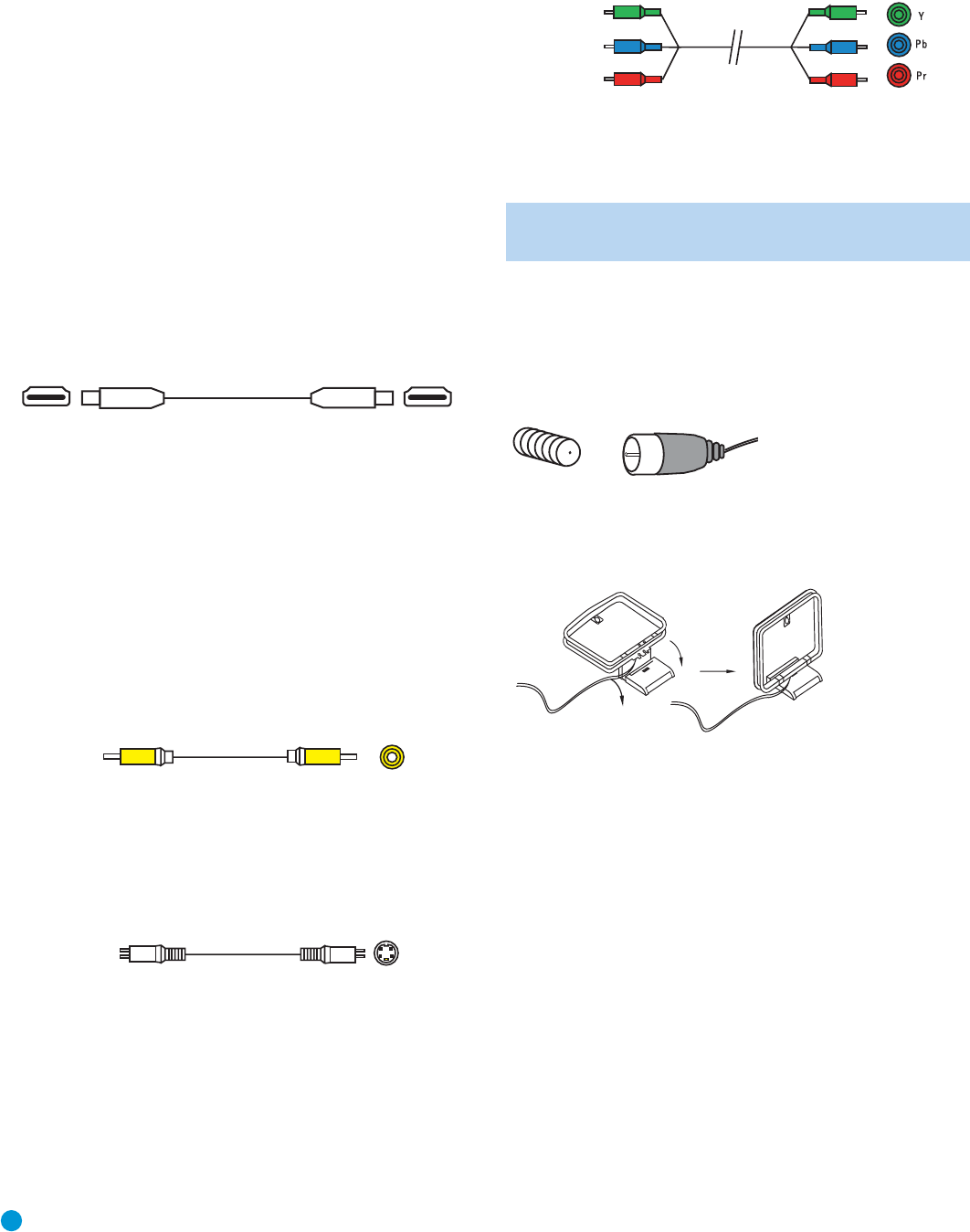
18
CONNECTIONS
of the data. Although this enables the AVR 147 to be compatible with
virtually any HDMI-capable source device and video display, it requires a
separate audio connection for each source since the AVR 147 doesn’t
have access to the audio data in the HDMI stream.
The AVR 147 is Simplay HD-verified for compatibility via the HDMI
connection with other Simplay HD-verified products.
The AVR 147 will not convert analog video signals to the HDMI format,
and the on-screen displays are not visible when using an HDMI source.
Therefore, you will need to connect the composite or S-video monitor
output to your video display (or both, depending on which video con-
nections your sources use), to view the on-screen menus.
The physical HDMI connection is simple. The connector is shaped for
easy plug-in (see Figure 9). If your video display has a DVI input, you
may use an HDMI-to-DVI adapter (not included) to connect it to the
AVR’s HDMI Output.
Figure 9 – HDMI Connection
Analog Video
There are three types of analog video connections: composite video,
S-video and component video.
Composite video is the basic connection most commonly available.
The jack is usually color-coded yellow, and looks like an analog audio
jack, although it is important never to confuse the two. Do not plug a
composite video cable into an analog or coaxial digital audio jack, or
vice versa. Both the chrominance (color) and luminance (intensity)
components of the video signal are transmitted using a single cable.
See Figure 10.
Figure 10 – Composite Video
S-video, or “separate” video, transmits the chrominance and luminance
components using separate wires contained within a single cable. The
plug on an S-video cable contains four metal pins, plus a plastic guide
pin. Be careful to line up the plug correctly when you insert it into the
jack on the receiver, source or video display. See Figure 11.
Figure 11 – S-Video
Component video separates the video signal into three components –
one luminance (“Y”) and two subsampled color signals (“Pb” and “Pr”) –
that are transmitted using three separate cables. The “Y” cable is
color-coded green, the “Pb” cable is colored blue and the “Pr” cable
is colored red. See Figure 12.
Figure 12 – Component Video
If it’s available on your video display, HDMI is recommended as the best
quality connection, followed by component video, S-video and then
composite video.
NOTE: A composite or S-video connection to your TV is
required to view the AVR’s on-screen displays.
Antennas
The AVR 147 uses separate terminals for the included FM and AM
antennas that provide proper reception for the tuner.
The FM antenna uses a 75-ohm F-connector. See Figure 13.
Figure 13 – FM Antenna
The AM loop antenna needs to be assembled. Then connect the two
leads to the screw terminals on the receiver. See Figure 14.
Figure 14 – AM Antenna
RS-232 Serial Port
The RS-232 serial port on the AVR 147 is used only for data. If
Harman Kardon releases a software upgrade for the receiver’s operating
system at some time in the future, the upgrade may be downloaded
to the AVR using this port. Complete instructions will be provided at
that time.
Component
video cable
S-video cable
Composite
video cable
AVR147-OM.qxd 2/6/07 3:17 PM Page 18


















